Which target seats are the ones to watch in General Election? How Theresa May could steal Labour's heartlands
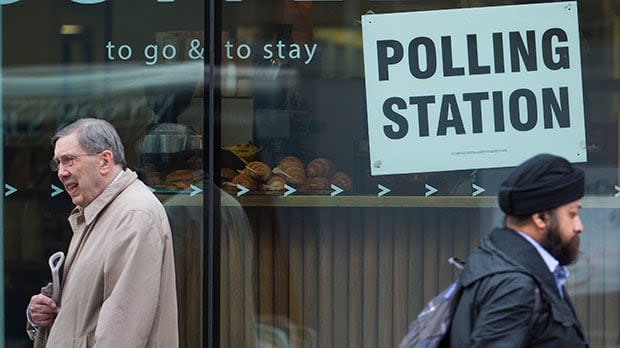
Over the course of the General Election campaign, Theresa May has worked to make a pitch to working class voters in Labour's traditional heartlands.
In previous elections the notion that the North of England could be winnable for the Conservatives would have been unthinkable - but there are many recent signs to suggest that many areas could turn blue this time around.
Both the North East and the North West voted emphatically to leave the EU in last June's referendum and some polling has shown that the Conservatives are now level with Labour in the North and lead among working class voters.
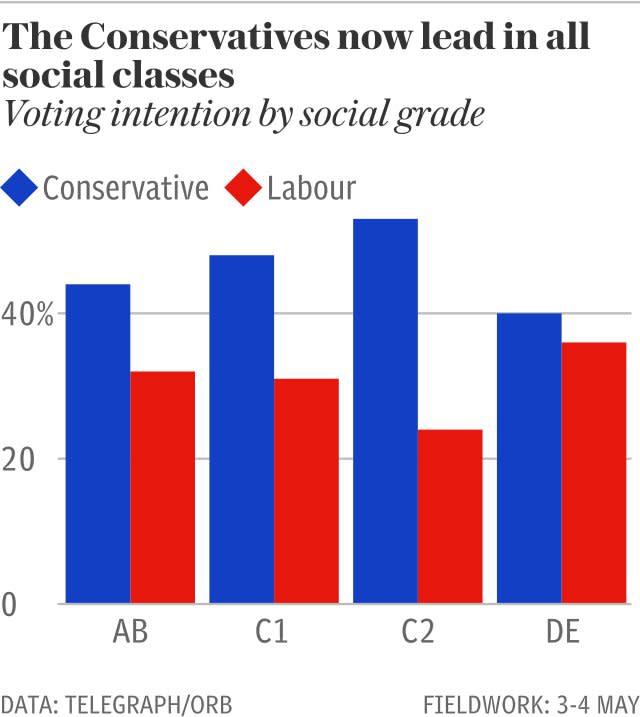
This, combined with strong performances in the North East at the local elections, will give the Conservatives hope that their stance on Brexit could allow them to crack the North.
There are 28 seats in the North East and North West of England in which the Conservatives are fewer than 10,000 votes behind either Labour or the Lib Dems. These are the seats that Theresa May will be targetting.
Chester is the lowest hanging fruit, with Labour's Chris Matheson beating his Conservative opponent by fewer than 100 votes in 2015.

Wirral West, Barrow & Furness and Lancaster & Fleetwood are the next tightest, with swings of less than two per cent to the Conservatives from Labour required.
In the North East, the Conservatives have realistic hopes of winning Darlington, Middlesbrough South and Hartlepool.
Brexit could be the defining factor across the UK
The Conservatives are currently polling at around 43 per cent, according to the latest average – six points clear of Labour on 37 per cent.
On a constituency level, Leave-voting Labour areas are likely to swing harder towards the Conservatives than the national swing suggests.
This was seen in Theresa May's shock victory in the Copeland by-election. The Leave-voting area swung by more than six per cent to the Conservatives after being in Labour hands for its entire history.
The Conservatives are likely to gain around 58 seats in Labour's North and Midlands heartlands due to the Brexit effect in the upcoming snap election on June 8. Some have claimed that even MPs with a majority of 9,000 could lose their seats.
An analysis of the 2015 General Election results by The Telegraph has shown that this would mainly affect seats in the North and the Midlands – areas which voted strongly for Brexit last June.
If the Tories are successful, it would be a huge blow to Jeremy Corbyn's party and would mean that several Labour frontbenchers would lose their seats in Parliament.
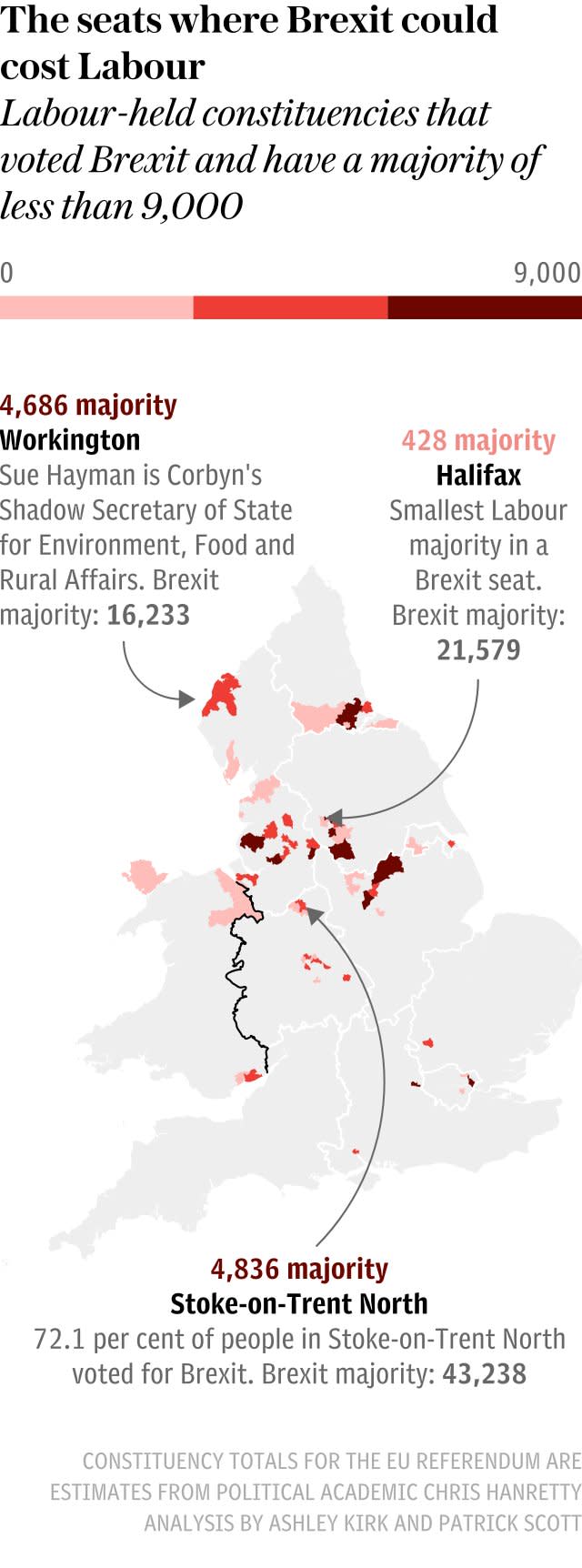
If Theresa May claims all 58 Labour seats that voted Brexit and had a Labour majority of less than 9,000, she would be granted a parliamentary working majority of more than 100.
At the same time, constituencies where people voted to Remain in the EU are less likely to swing towards the Conservatives, given that Theresa May has so far been pursuing a hard Brexit. This could result in increased Lib Dem or Labour vote share in some areas.
Taking Brexit into account, the loss of 58 Brexit-leaning Labour constituencies would grant Theresa May a majority of 133 seats – 116 more than her current total of 17.
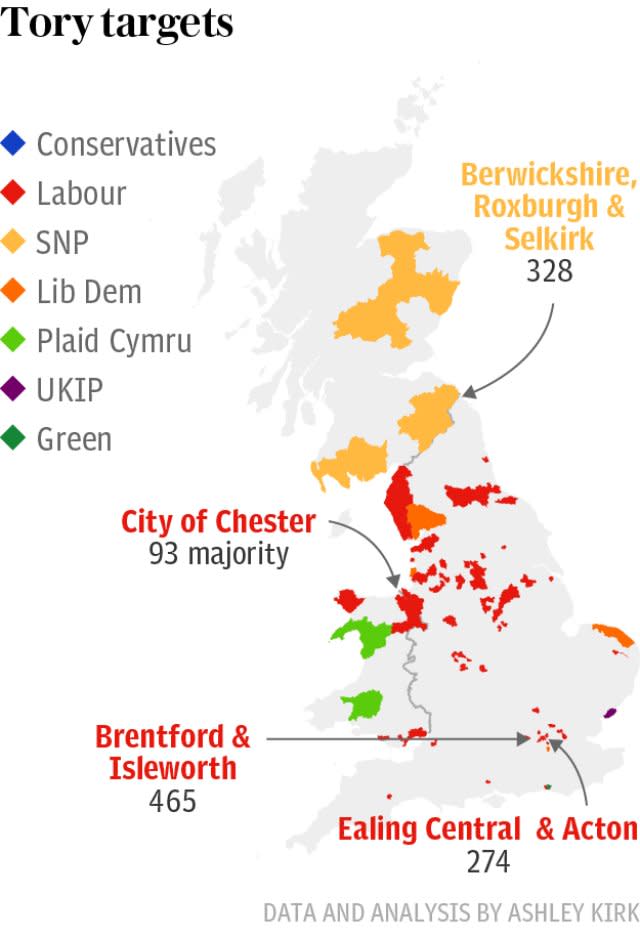
Which Brexit seats could the Conservatives gain?
There are 58 Labour-held seats where the Conservatives are fewer than 9,000 votes behind and where the constituents voted Leave in the EU referendum last June.
Of these 58 seats, 37 are located in the Midlands or in the North of England, while a further seven are in Wales.
The seat with the narrowest Labour majority is Halifax, where the Conservatives finished just 428 votes behind Labour in the 2015 General Election. This seat is particularly vulnerable due to the fact that Halifax voted to Leave the EU by 60 per cent to 40 per cent.
Labour shadow ministers are among the potential casualties, with the Shadow Secretary of State for Environment, Food and Rural Affairs, Sue Hayman, and the Shadow Minister for Voter Engagement and Youth Affairs, Cat Smith, likely to lose their constituencies in the North West.
Mary Creagh, who contended the Labour leadership race which led to Jeremy Corbyn being elected, is also vulnerable, with a 2,613 majority in her Brexit-leaning Wakefield constituency. Just over 60 per cent of her constituents voted to leave the EU in the referendum, while she abstained in the Parliamentary vote to trigger Article 50.
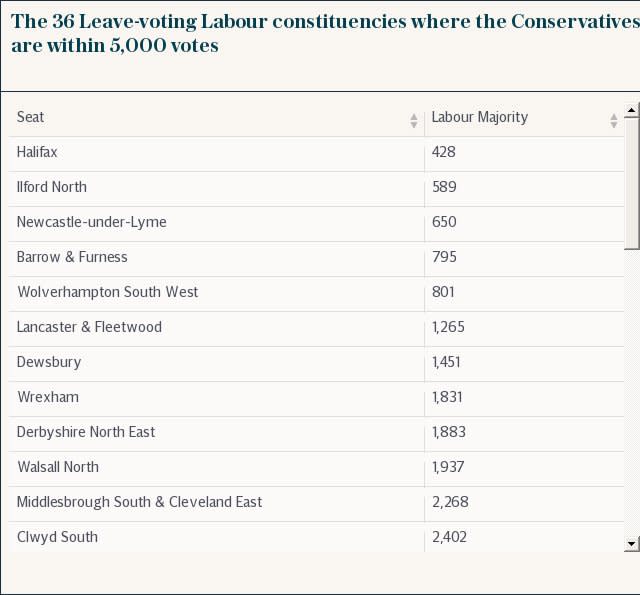
But which Remain-backing seats could the Tories lose?
The Tories will, however, face pressure from enthusiastic EU-backing Lib Dems who will seek to re-gain seats that they lost in the 2015 General Election.
Theresa May currently holds Remain-backing Lewes with a majority of 1,083 (2.1 per cent) and Twickenham with a majority of 2,017 (3.3 per cent).
Both of these areas were taken from the Lib Dems by David Cameron in 2015. Vince Cable saw his vote share decline by 16.4 percentage points when he lost in Twickenham.
However, considering the fact that both of these constituencies voted Remain – Twickenham with a majority as large as 66 per cent – the Lib Dems will see an opportunity in winning over the voters that deserted them in the last election.
Kingston & Surbiton and Bath also voted Remain and have a Tory majority of less than 5,000, leaving them as potential targets for the Lib Dems.
Assuming Theresa May loses these four Remain-backing Tory constituencies, she could be left with a working majority of 81 seats.
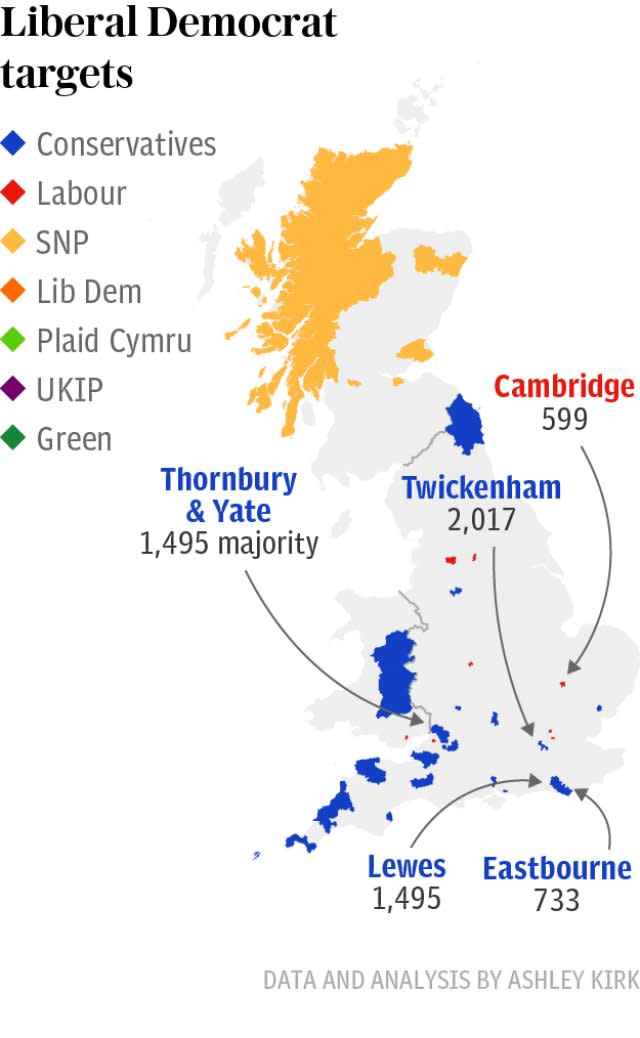

 Yahoo News
Yahoo News 
